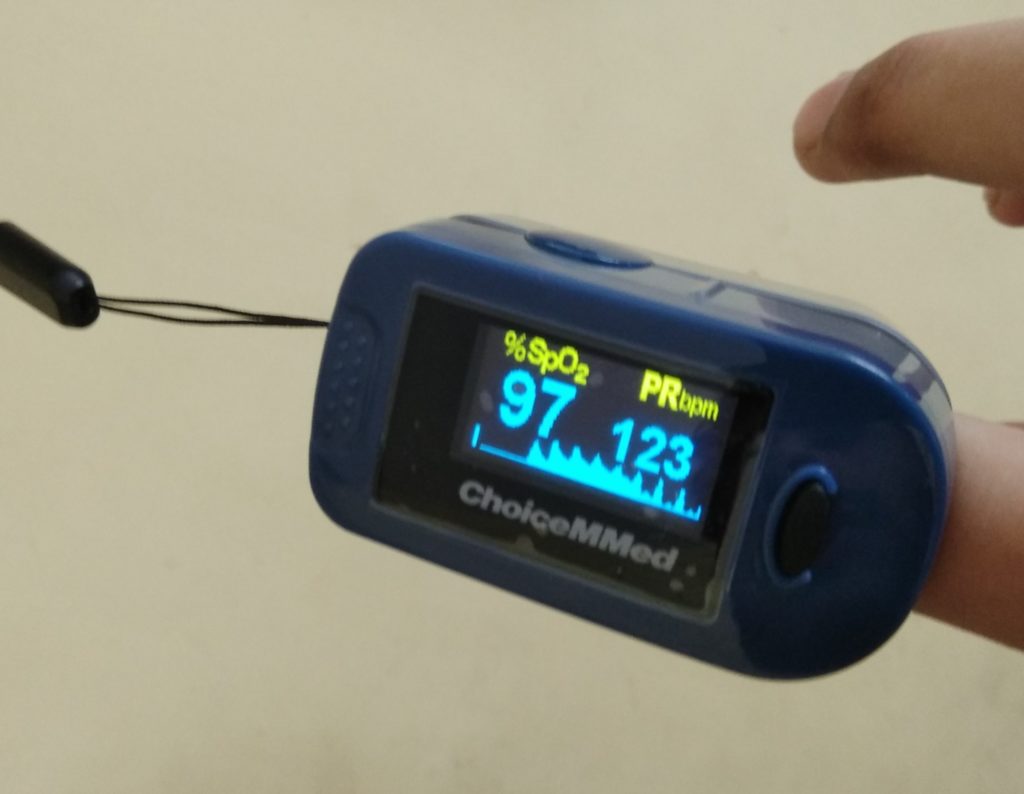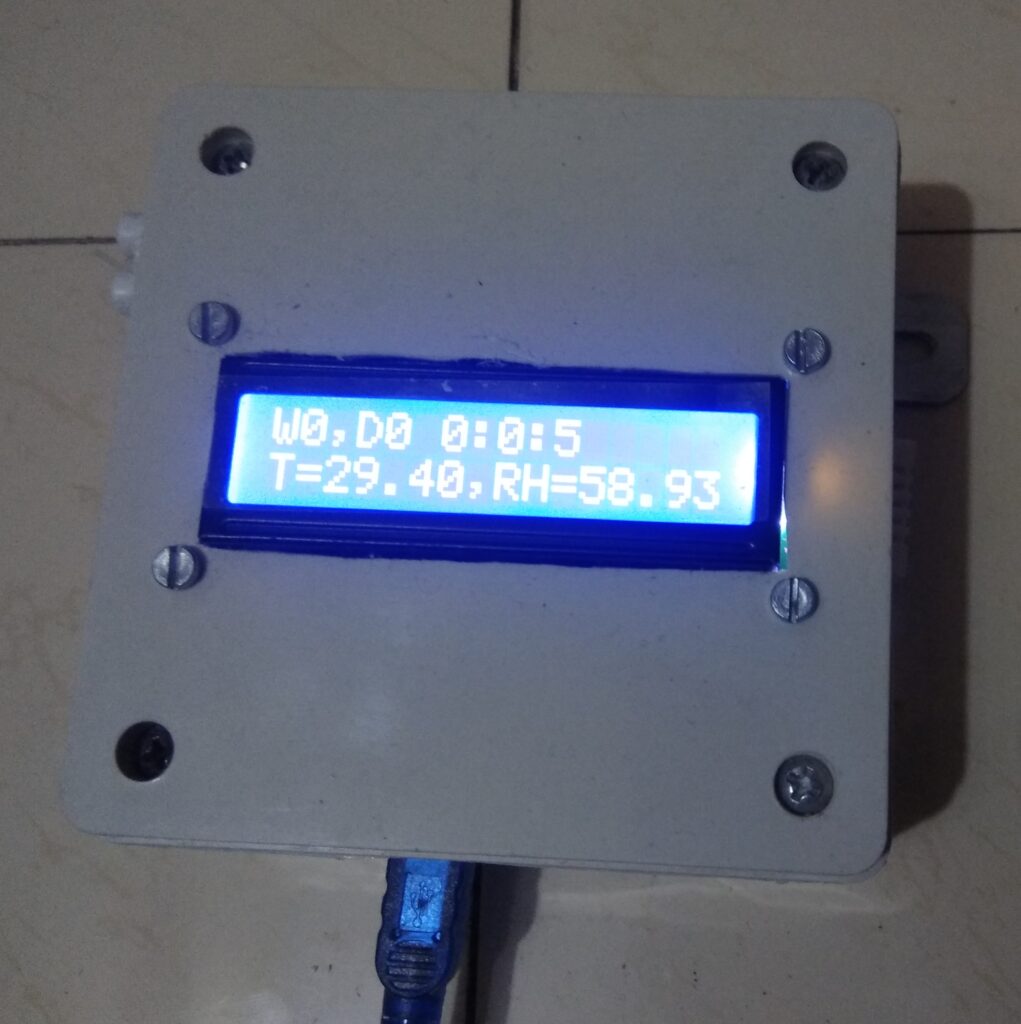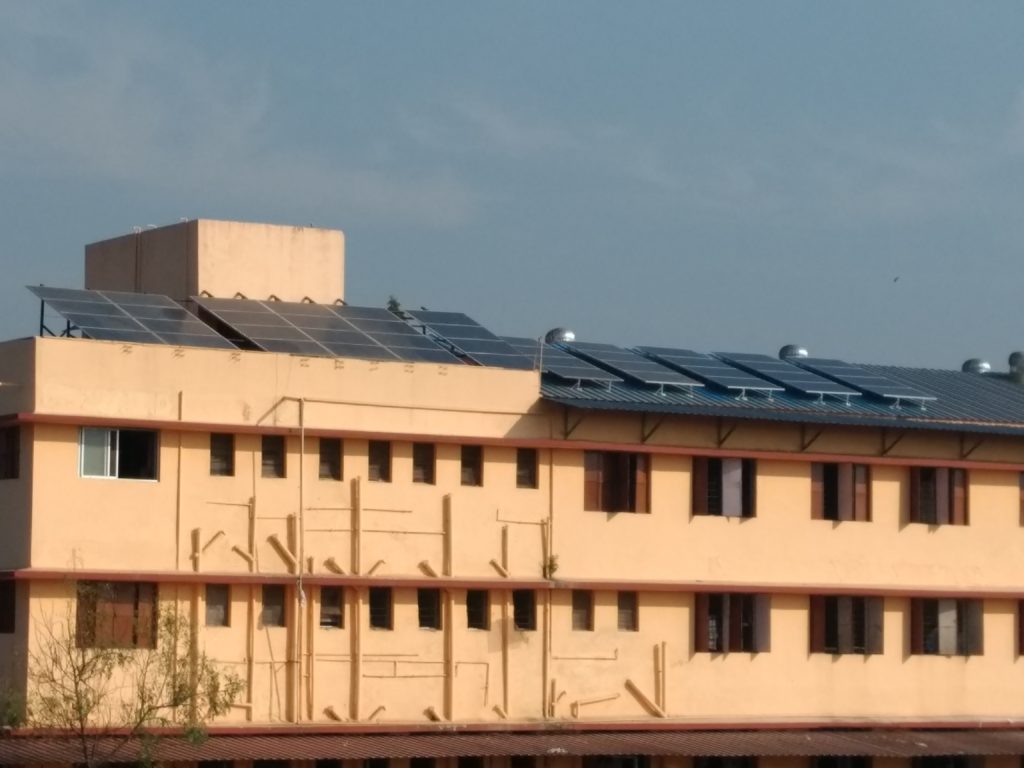भाग ३ – बॅटरीवर आधारीत सौर ऊर्जा
Part 3 – Battery based Solar Energy
याआधीच्या भागामध्ये आपण घरगुती वापराच्या विजेच्या युनिट बद्दल माहीती करून घेतली. आता आपण पाहूया की सौर विजेचा पर्याय कसा काय आहे ते.
In previous articles we discussed about the units of electricity for household usage. Now we will see how can solar electricity be useful to us.
सोलर पॅनल वापरून वीजनिर्मिती करता येतेच, परंतु सौर ऊर्जेची उपलब्धता दर दिवशी आणि ऋतुमानाप्रमाणे बदलत राहते, इतकेच कशाला, निरभ्र लख्ख सूर्यप्रकाश देणारे आकाश केवळ ५ – १० मिनिटांमधे ढगांनी व्यापले जाऊन सूर्यप्रकाश अचानक कमी होतो. त्यामुळे सोलर पॅनेल्स मधून निर्माण होणारी वीज ही सततच सूर्यप्रकाशाच्या तीव्रतेनुसार कमी जास्त होत राहणार. थोडक्यात काय तर सौरविजेची उपलब्धता आणि आपल्या घरामध्ये त्या त्या वेळी किती वीजवापर सुरु असेल ह्या दोन गोष्टींचा ताळमेळ राहात नाही. याउलट वीजजाळ्यामधून आपल्याला हवी तेव्हा आणि हवी तितकीच वीज वापरायला घेता येते.
Though it is very much possible to generate electricity using solar panels, the instantaneous availability of solar electricity varies every day and across seasons. In fact even on a given day, the clear sky can suddenly turn cloudy and due to reduced sunlight, the solar electricity generation will come down. Thus the solar electricty generated at any time will keep fluctuating based on sunlight. In short there is very less likely to be a match between the solar electricity generated and the electricity needed for consumption. On the other hand if we consume electricity from the electric grid, it can, at all times, supply as much and only that much electricity being consumed.
उदारणार्थ खालील आलेखामध्ये सकाळी साडेसात वाजल्यापासून सायंकाळी साडेपाच वाजेपर्यंत सौरवीजनिर्मितीचे प्रमाण पहायला मिळते आहे. एकतर सूर्य जसा डोक्यावर येऊ लागतो तसे निर्मिती वाढते, परंतु अधूनमधून ढगाळ हवामानामुळे वीजनिर्मिती अचानक कमी झाल्याचे स्पष्टपणे दिसते आहे.
दिनांक – ३० सप्टेंबर २०२० / Date – 30-Sep-2020
ठिकाण – ठाणे ४००६०२ / Place – Thane 400602
सौर पॅनल क्षमता – ४८० वॅट / Solar Panels Capacity – 480 watt
उभा अक्ष – य – वीजनिर्मिती वॅट मधे / Vertical Axis Y – Electricty generated Watts
आडवा अक्ष – क्ष – वेळ तास:मिनिटे / Horizontal Axis X – Time HH: MM

The graph shows how the solar electricity generation varies over time on a typical day.
सौरवीज आणि वीज जाळ्यातली (ग्रीडमधून मिळणारी) वीज ह्या दोघांमध्ये हा मुख्य फरक आहे – हा मुद्दा सतत लक्षात ठेवावा लागतो .
म्हणून सोलर पॅनल मधून निर्माण होणारी वीज साठवून ठेवण्याची आणि नंतर आवश्यकतेनुसार वापरायला मिळेल अशी काहीतरी सोय अत्यावश्यक आहे.
Solar electricity and grid electricity are drastically different from each other in this aspect of availability. and this point needs to be remembered at all times.
Hence it is required that there has to be a way to store electricity generated from solar panels and later make it available for use when needed.
वीज साठवण्याचे सोपे साधन म्हणजे बॅटरी किंवा विजेरी.
ह्यामध्ये वेगवेगळ्या रासायनिक द्रव्यांचा अथवा संयुगांचा आणि काही ठराविक धातूंच्या पट्ट्यांचा वापर करून वीज साठवण्याची क्षमता निर्माण केलेली असते.
बॅटरी चार्ज केली जाते तेव्हा बाहेरून पुरवलेली वीज / विद्युत प्रवाह वापरून एका विशिष्ठ प्रकारची रासायनिक अभिक्रिया होते आणि बॅटरीमध्ये ऊर्जा साठविली जाते. याउलट जेव्हा बॅटरीद्वारे एखादे विजेचे उपकरण चालवले जाते तेव्हा विरुद्ध प्रकारची रासायनिक क्रिया होते आणि बॅटरी डिस्चार्ज होते किंवा उतरते. जेवढी ऊर्जा साठवलेली असेल त्याप्रमाणात ऊर्जा वापरायला घेऊ शकतो.
ह्या प्रकाराला चार्ज आणि डिस्चार्ज सायकल असे म्हटले जाते.
साहजिकच जितक्या मोठ्या प्रमाणात वीज साठवून ठेवायची असेल तितकी मोठ्या आकाराची (आणि किमतीचीदेखील) बॅटरी वापरणे आवश्यक असते. कुठल्याही बॅटरीचा महत्वाचा भाग हा असतो की – बॅटरी पूर्णपणे निरुपयोगी होईपर्यंत किती वेळा चार्ज आणि डिस्चार्ज करता येईल. बॅटरी बनवण्याच्या तंत्रज्ञानानुसार आणि प्रकारानुसार ज्या काही चार्ज-डिस्चार्ज सायकलची संख्या शक्य असते तितकी वापरून झाली की बॅटरी निकामी तरी होते किंवा अतिशय कमी क्षमतेने काम करू लागते.
चांगल्या दर्जाच्या बॅटरीला चार्ज-डिस्चार्ज सायकल खूप जास्त असायला हव्यात.
आजकाल विविध प्रकारच्या बॅटरी उपलब्ध आहेत.
त्यामध्ये बऱ्याच काळापासून स्थिरावलेला आणि प्रचलित प्रकार म्हणजे लेड एसिड बॅटरी –
ही खूप जड आणि जाड असते, द्रवरूपात आम्ल भरलेले असते त्यामुळे जेथे बॅटरी एकाच ठिकाणी कायमस्वरूपी ठेवायची आहे फक्त तेथेच ही सोयीची होते. तुलनेने किंमत कमी आहे, परंतु हिचे आयुर्मान / चार्ज-डिस्चार्ज सायकल्स सुद्धा कमी असतात.
दुसरा अलीकडच्या काळात प्रचलित होत असलेला प्रकार म्हणजे लिथियम बॅटरी, वजनाने हलकी आणि जास्त आयुर्मान – अर्थातच महाग.
The commonly known approach to store electricity is a battery which is based on chemical reactions between metals/non-metals and acid or such liquids. During the charging process a specific chemical reaction happens and electric energy is stored in chemical form. Later when the electricity is consumed, a reverse chemical reaction occurs and battery discharges or drains.
Such a process is called as one charge-discharge cycle. After the permissible charge-discharge cycles are exhausted, the battery goes almost dead/useless and needs to be replaced.
Obviously a good battery needs to have large number of such charge-discharge cycles and it needs to have large enough the storage capacity based on usage requirements.
There are two popular battery types
Lead Acid: An old timer, heavy, contains acid in liquid form, good for stationary applications, relatively lower priced but also less number of charge-discharge cycles.
Lithum Based: Relatively new, light weight, usable on the move, costlier but also supports more charge-discharge cycles.
बॅटरीच्या क्षमतेकरीता विद्युतभार (व्होल्टेज) आणि प्रवाहक्षमता (अँपिअर-अवर ) अशी दोन परीमाणे प्रचलित आहेत.
उदाहरणार्थ : घरातील इन्व्हर्टर साठी १२ वोल्ट आणि १८० अँपिअर-अवर ची एखादी बॅटरी सामान्यतः बसविलेली पाहायला मिळेल.
सोप्या भाषेत सांगायचे तर अशी बॅटरी १२ वोल्टवर चालणाऱ्या उपकरणामधून १८० अँपिअर इतका करंट एक तासभर प्रवाहित करु शकेल.
किंवा १८ अँपिअर १० तासाकरिता
किंवा २ अँपिअर ९० तासाकरिता
आणि अश्या प्रकारे १२ x १८० = २१६० वॅट अवर = २.१६ के डब्ल्यू एच (KWH) इतकी विद्युत ऊर्जा ही बॅटरी साठवून ठेवू शकेल आणि हवी तेव्हा पुरवू शकेल.
मात्र हे असे करताना बॅटरी चे एक चार्ज आणि डिस्चार्ज सायकल संपले असे होईल.
Typically a battery is specified by its voltage and current rating as an example, a household inverter battery would be a 12 VDC 180 Amp-Hour capacity. That means it can push 180 ampere current through an electrical appliance operating at 12V for one hour, or 18 ampere for 10 hours or 2 amperes for 90 hours.
This way such a battery can store and supply 12×180 = 2160 watt-hour = 2.16 KWH of electrical energy.
अशी एक बॅटरी घेऊन आपण तिला सोलर पॅनल मध्ये दिवसा सूर्यप्रकाशात निर्माण होणाऱ्या विजेने चार्ज करूया आणि सूर्यप्रकाश नसेल तेव्हा (सकाळी, संध्याकाळी आणि रात्री ) गरजेनुसार बॅटरी मध्ये साठवलेल्या विजेचा वापर करूया.
असे गृहीत धरलेले आहे की पॅनल मध्ये निर्माण होणारी वीज आणि आपल्याला दिवसाभरामध्ये संपूर्ण २४ तासांमध्ये वापरण्यासाठी लागणाऱ्या वीजेचे प्रमाण हे एकमेकांशी साधारणपणे मिळतीजुळते आहे /असेल.
आणि अशी ही बॅटरीवर आधारित प्रणाली / सिस्टीम दररोज आपल्याला वीजपुरवठा करीत राहील. दररोज २ युनिट इतका वीजवापर असेल आपल्या बॅटरीच्या ०.७५ ते १ चार्ज डिस्चार्ज सायकल दररोज वापरल्या जातील.
Let us consider that we take such a battery and set it up to get charged by solar panels in the daytime. We consume the stored electricity during the time when sunlight is not avaialble (early morning, evening and night). It is assumed that the battery and solar panels are so selected that the solar electricity generated and electricity needed for conumption is more or less matched to each other. If the daily consumption is 2KWH then such a battery would end up in depletion of its 0.75 to 1 charge-discharge cycles.
ह्यामध्ये समस्या अशी आहे की एका वर्षाच्या वापरानंतर सुमारे २०० ते ३५० चार्ज डिस्चार्ज सायकल संपून गेलेल्या असतील, आणि जरी ५०० सायकल क्षमतेची बॅटरी (लेड ऍसिड प्रकारातली ) असली तरीदेखील दीड ते दोन वर्षांमध्ये ती जवळजवळ निकामी होऊन नवी बॅटरी बसवायची (आणि तितका म्हणजे १०००० ते १५००० रुपये इतका खर्च पुन्हा करावा लागण्याची) वेळ येईल.
The problem is – after an year of usage in this way, the battry would have lost its 200 to 350 charge-discharge cycles, and even if a battery with 500 cycles is installed (typically a good quality and moderately costly variant) it will be almost dead within 2 years. Then it needs to be replaced at a cost of about 10000 to 15000 INR.
त्याऐवजी लिथियम प्रकारची बॅटरी असेल (जी सुमारे १५००-२००० चार्ज डिस्चार्ज सायकल देऊ शकते आणि निर्माते तरीही फक्त ३ ते ४ वर्षांची वारंटी/ग्यारंटी देतात) तर ती ५ ते ६ वर्षे वापरता येईल, आणि नंतर नवी बॅटरी बसवते वेळी लेड ऍसिड च्या तुलनेत ३ पट जास्त किमतीला घ्यावी लागेल.
If instead a lithum based battery is used (which has 1500 to 2000 cycles but still a warranty of 3 to 4 years) will run for about 5 to 6 years. And then when a new battery needs to be installed, it will cost almost 3 times more as compared to a lead-acid battery.
तात्पर्य – तर दीर्घकालीन विचार केल्यास बॅटरीवर आधारित सोलर विद्युत ऊर्जा प्रणाली आर्थिक दृष्ट्या परवडणारी नाही.
Conclusion : In long term a battey based solar electric system is not financial viable.
आपल्याला इमर्जन्सी म्हणून एखाद्या उपकरणाला वीजपुरवठा करणे गरजेचे असेल तर मात्र बॅटरी वर आधारित सिस्टीम वापरणे अपरिहार्य ठरेल.
As an emergency requirement if any device needs to be always up and running then a battey based system is an unavoidable option.
तर मग ह्याला एखादा चांगला पर्याय आहे का? पुढील भागामध्ये पाहूया.
So then is there any better alternative to this? we will see in next part.







